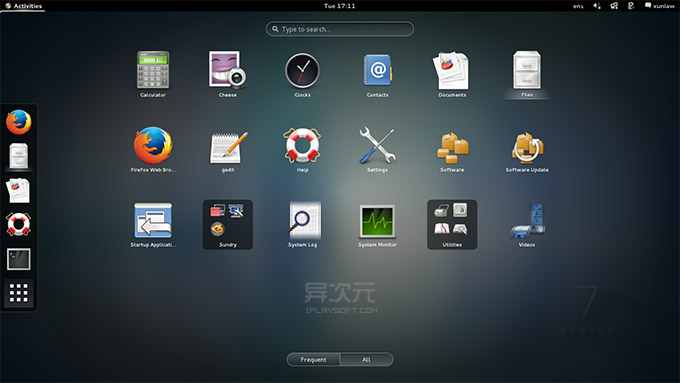The OpenSSH tools include scp, which is a secure file-transfer utility, to help with this. To move the contents of your public key (.ssh ided25519.pub) into a text file called authorizedkeys in.ssh on your server/host. Openssh-bugs openssh-commits openssh-unix-announce openswan-cvs openswan-dev openswan-nightly openswan-users openvas-announce openvas-cvs openvas-development openvas-discuss openvas-plugins openwall-announce os-sim-commits os-sim-devel os-sim-support osiris osiris-announce osiris-devel oss-security ossec-dev ossec-list otr-announce otr-dev otr. Most Linux and Unix distribution create ssh keys for you during the installation of the OpenSSH server package. But it may be useful to be able re-generate new server keys from time to time. For example, when you duplicate VM (KVM or container) which contains an installed ssh package and you need to use different keys from cloned KVM VM guest. OpenSSL vs OpenSSH: What are the differences? OpenSSL: Full-featured toolkit for the Transport Layer Security and Secure Sockets Layer protocols.It is a robust, commercial-grade, and full-featured toolkit for the Transport Layer Security (TLS) and Secure Sockets Layer (SSL) protocols. Jul 09, 2004 OpenSSH for Windows. OpenSSH for Windows. OpenSSH for Windows is a free package that installs a minimal OpenSSH server and client utilities in the Cygwin package without needing the full Cygwin installation. The OpenSSH for Windows package provides full SSH/SCP/SFTP support.
If you’re a network administrator, developer, or someone hosting a website in the cloud, you’ve probably been using tools like Putty on Windows 10 to connect to your server using Secure Shell (SSH), which works fine, but you no longer need to rely on third-party tools as the Fall Creators Update now includes a ported version of OpenSSH.
What’s Secure Shell? In case you’re unfamiliar, SSH is a networking protocol similar to Telnet and FTP that allows you to transmit data from one computer to another, but unlike other protocols, this one transmits information securely using encryption. OpenSSH is a popular app in the Linux community as it allows you to connect and manage a remote server using the SSH protocol as if you’re sitting in front of it.
In this guide, you’ll learn the steps to install OpenSSH on a PC running the Windows 10 Fall Creators Update using the Settings app “Optional features,” and installing the Ubuntu distro.
How to install OpenSSH using Settings
Installing the OpenSSH package directly into Windows 10 allows to use Command Prompt to connect a remote server using SSH as if it was a native component of Windows.
Open Settings.
Click on Apps.
Click on Apps & features.
Under “Apps & features,” click the Manage optional features link.
Click the Add a feature button.
Select the OpenSSH Client option.
Click the Install button.
Once you’ve completed the steps, the Linux-based OpenSSH (beta) application will install on Windows 10.
You can always start the client by launching a Command Prompt session, and running the ssh command to use OpenSSH.
How to install OpenSSH using Ubuntu

Alternatively, you can install the Ubuntu distro for Windows 10 that already includes OpenSSH. (You’ll be using the same commands using Command Prompt on Windows 10 or using the Ubuntu console, so it doesn’t really matter which method you use.)
Install the Windows Subsystem for Linux
Open Start.
Search for Windows Features, in the result, and click Turn Windows features on or off.
Check the Windows System for Linux option.
Click OK.
Click the Restart now button.
After restarting your computer, you can proceed to install Ubuntu on Windows 10.

Install Ubuntu on Windows 10
Open the Microsoft Store.
Search for Ubuntu.
Click the Install button.
Once you’ve completed the steps, you don’t need to do anything else, because OpenSSH comes pre-installed with Ubuntu. You can launch the tool by launching Ubuntu from the Start menu, and then simply run the ssh command to use OpenSSH.

If you have any questions about the installation of OpenSSH on Windows 10 or on how to use it, remember that you can start a conversation in the Pureinfotech forums.
Recently, Microsoft has released a port of OpenSSH for Windows. You can use the package to set up an SFTP/SSH server on Windows.
- Installing SFTP/SSH Server
- Connecting to the server
Advertisement
Openssh For Windows
- In Settings app, go to Apps > Apps & features > Manage optional features.
- Locate “OpenSSH server” feature, expand it, and select Install.
Binaries are installed to %WINDIR%System32OpenSSH. Configuration file (sshd_config) and host keys are installed to %ProgramData%ssh (only after the server is started for the first time).
You may still want to use the following manual installation if you want to install a newer version of OpenSSH than the one built into Windows 10.
- Download the latest OpenSSH for Windows binaries (package
OpenSSH-Win64.ziporOpenSSH-Win32.zip) - As the Administrator, extract the package to
C:Program FilesOpenSSH - As the Administrator, install sshd and ssh-agent services:
- Allow incoming connections to SSH server in Windows Firewall:
- When installed as an optional feature, the firewall rule “OpenSSH SSH Server (sshd)” should have been created automatically. If not, proceed to create and enable the rule as follows.
- Either run the following PowerShell command as the Administrator:
ReplaceC:System32OpenSSHsshd.exewith the actual path to thesshd.exe(C:Program FilesOpenSSHssh.exe, had you followed the manual installation instructions above). - or go to Control Panel > System and Security > Windows Defender Firewall1 > Advanced Settings > Inbound Rules and add a new rule for port 22.
- Start the service and/or configure automatic start:
- Go to Control Panel > System and Security > Administrative Tools and open Services. Locate OpenSSH SSH Server service.
- If you want the server to start automatically when your machine is started: Go to Action > Properties. In the Properties dialog, change Startup type to Automatic and confirm.
- Start the OpenSSH SSH Server service by clicking the Start the service.
These instructions are partially based on the official deployment instructions.
Follow a generic guide for Setting up SSH public key authentication in *nix OpenSSH server, with the following difference:
- Create the
.sshfolder (for theauthorized_keysfile) in your Windows account profile folder (typically inC:Usersusername.ssh).2 - For permissions to the
.sshfolder and theauthorized_keysfile, what matters are Windows ACL permissions, not simple *nix permissions. Set the ACL so that the respective Windows account is the owner of the folder and the file and is the only account that has a write access to them. The account that runs OpenSSH SSH Server service (typicallySYSTEMorsshd) needs to have read access to the file. - Though, with the default Win32-OpenSSH configuration there is an exception set in
sshd_configfor accounts inAdministratorsgroup. For these, the server uses a different location for the authorized keys file:%ALLUSERSPROFILE%sshadministrators_authorized_keys(i.e. typicallyC:ProgramDatasshadministrators_authorized_keys).

Before the first connection, find out the fingerprint of the server’s host key by using ssh-keygen.exe for each file.
In Windows command-prompt, use:
Openssh.com
Replace %WINDIR%System32 with %ProgramFiles%, if appropriate.
In PowerShell, use:
Openssh Server
Replace $env:WINDIRSystem32 with $env:ProgramFiles, if appropriate.
You will get an output like this:
Start WinSCP. Login dialog will appear. On the dialog:
- Make sure New site node is selected.
- On New site node, make sure the SFTP protocol is selected.
- Enter your machine/server IP address (or a hostname) into the Host name box.
- Enter your Windows account name to the User name box. It might have to be entered in the format
user@domainif running on a domain. - For a public key authentication:
- Press the Advanced button to open Advanced site settings dialog and go to SSH > Authentication page.
- In Private key file box select your private key file.
- Submit Advanced site settings dialog with the OK button.
- For a password authentication:
- Enter your Windows account password to the Password box.
- If your Windows account does not have a password, you cannot authenticate with the password authentication (i.e. with an empty password), you need to use the public key authentication.
- Save your site settings using the Save button.
- Login using Login button.
- Verify the host key by comparing fingerprints with those collected before (see above).
Advertisement
If you cannot authenticate to the server and use Windows 10 Developer mode, make sure that your OpenSSH server does not conflict with an internal SSH server used by the Developer mode. You may need to turn off the SSH Server Broker and SSH Server Proxy Windows services. Or run your OpenSSH server on a different port than 22.
Openssh Github
- Guide to Installing Secure FTP Server on Windows using IIS;
- Guide to uploading files to SFTP server;
- Guide to automating operations (including upload).
Openssh Version
- Windows Firewall on older versions of Windows.Back
- Windows File Explorer does not allow you to create a folder starting with a dot directly. As a workaround, use
.ssh., the trailing dot will allow you to bypass the restriction, but will not be included in the name.Back
